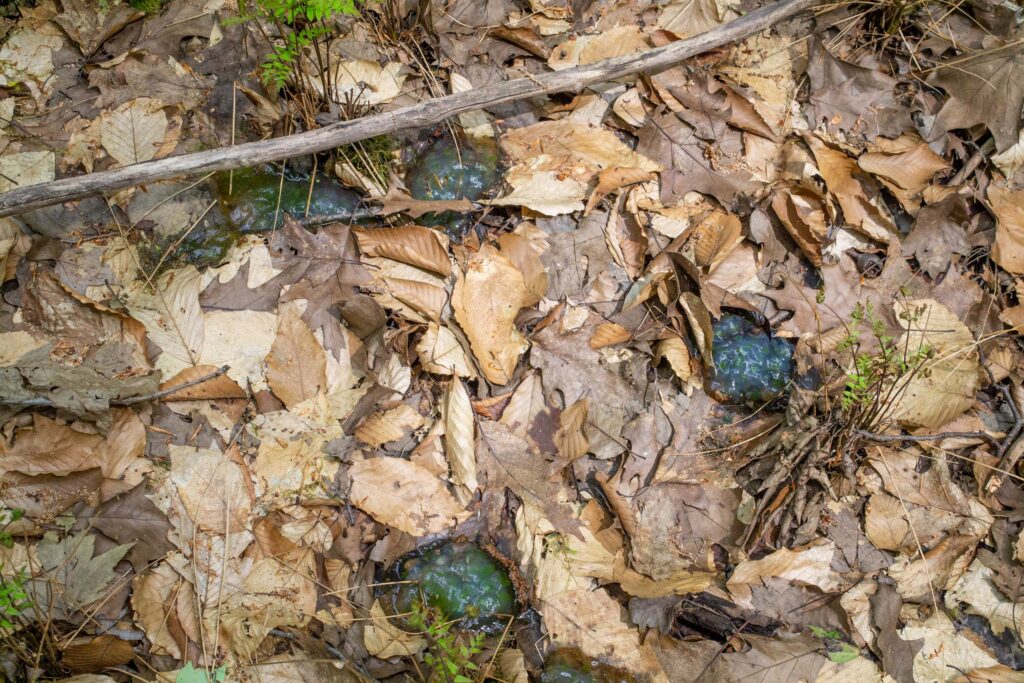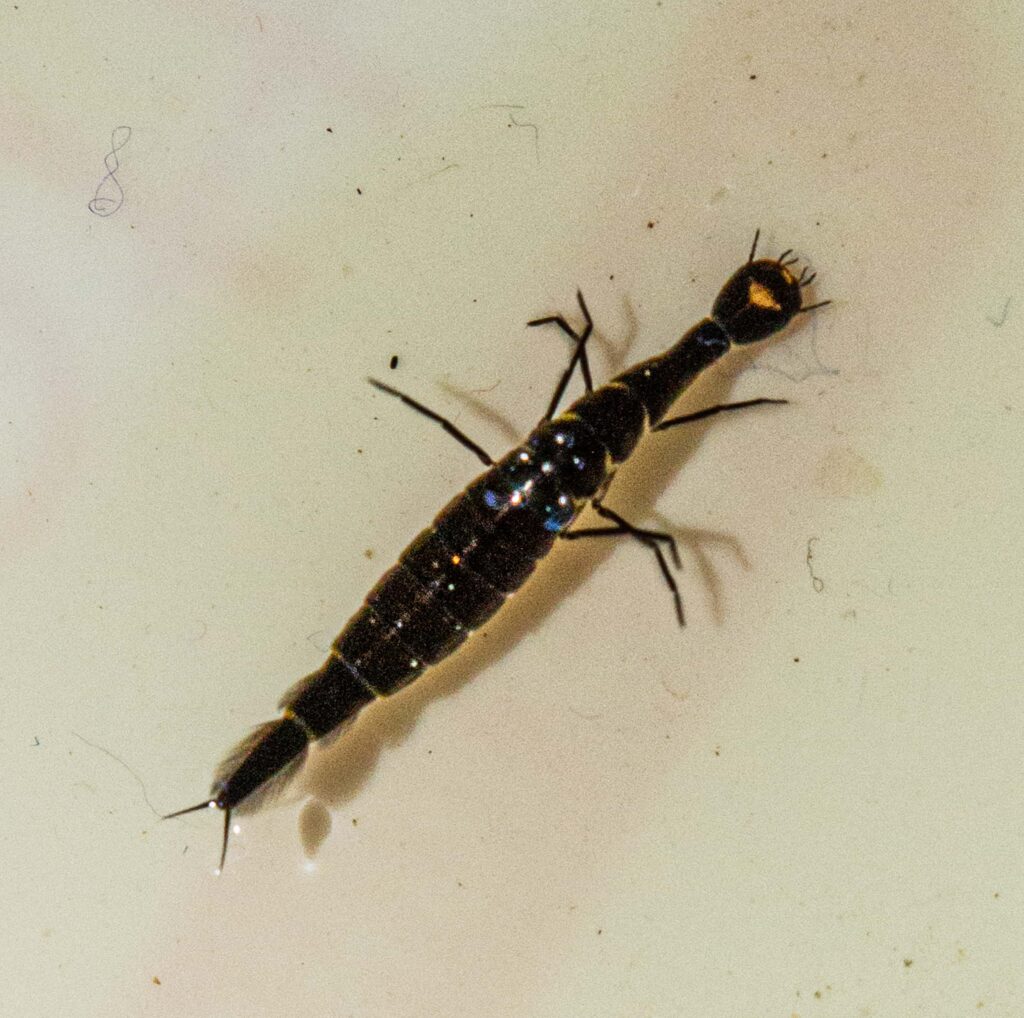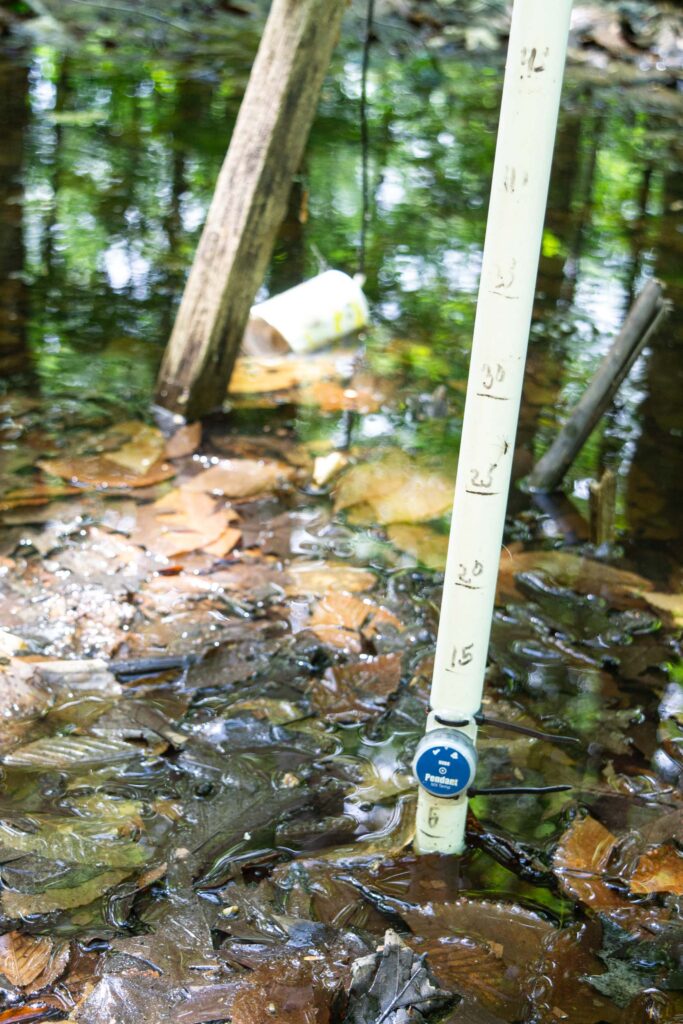About this time last year, our vernal pool near East Middlebury had been reduced to a puddle by some warm and dry weeks in May. According to our data logger, it was completely dry on June 16. 2020. This year the pool might be dry a little earlier than last year.

I visited yesterday to swap the SD card and batteries in the water depth data logger and barely got my feet wet doing that. The remaining puddle was full of wood frog tadpoles but not as many as I expected based on the dead tadpoles I found last year after the pool was dry. There might have been 200 tadpoles this year and many hundreds of corpses last year.

I didn’t find any dead tadpoles and didn’t see any live ones under wet leaves. It seems they had all migrated to the final puddle as the pool shrank. There were also a few salamander larvae swimming in the puddle. These were smaller and had external gills. I saw only a dozen of these.




Without regular rainfall, this vernal pool loses water quickly. Water depth decreased steadily throughout May. Rain events in late May were sufficient to lower water temperature but not to halt the decline in water depth. Water depth was about 9 cm when I visited on June 6. Some rain is possible on June 8, so the amphibians could survive for several more days. Their fate seems to be in the hands of thunderstorms.

Above is a short video of the tadpoles in the 9 cm deep puddle on June 6, 2021. No salamander larvae are visible in the scene, but some of the Dytiscid larvae are swimming around. The last part of the video is a beaver pond I passed on the way to the pool. Green frogs, bullfrogs, and gray tree frogs were calling around the pond. You can hear gray tree frogs in the video. This observation of bullfrogs is 0.7 miles from Ripton where there is no record of bullfrogs according to the Vermont Reptile and Amphibian Atlas. My last observation of bullfrogs was 0.9 miles from the Ripton town line, so progress is being made either by me or the frogs.

